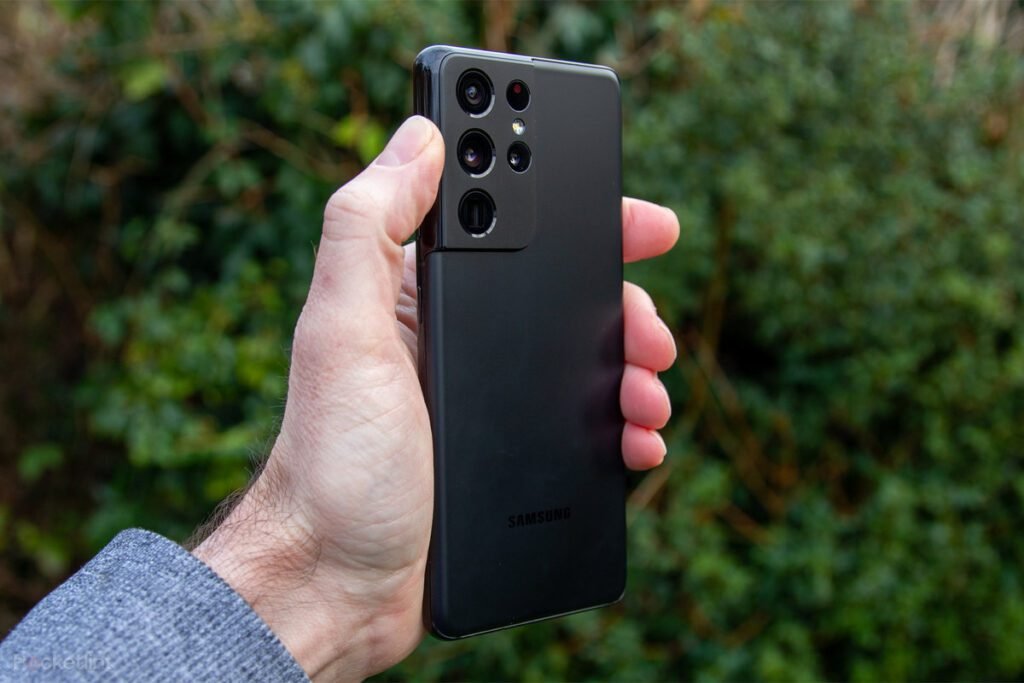Last updated on November 19, 2024
This post will show you some wonderful Samsung Galaxy S21 and S21+ app tips which you can use to customize or solve one or two problems on your Samsung S21 and S21 plus. The app’s taskbar is part of the launcher on your phone and the area where your app shortcuts are active.
13 Samsung Galaxy S21 and S21+ App Tips You Should Know
1. Show all apps on the home screen:
This is a popular Samsung Galaxy S21 and S21+ app tips for some. To remove the apps bar, long press on the home screen and tap Settings. Then select “Home screen layout” and you will see two options: “Home screen only” or “Home screen and Apps screen”. The former completely removes the app bar like the iPhone.
2. Add or remove an Apps drawer button:
By default, there is no Apps drawer button and you open the Apps drawer with a swipe. If you want the button to go back to the home screen settings, select “Show the Apps Screen Button”. Here you can turn it on or off.
3. Swipe to show or hide the app bar:
As above, the Galaxy S21 allows you to swipe up to show the app bar. The apps pages themselves then scroll left and right. You don’t have to press the home button to return to the home page. You can just swipe up again and the apps bar will disappear.
4. Change the grid size of the apps screen:
Like the home screen, you can change the density of the apps in the notification area/page. Go to the home screen settings as above and you will see the option for “Apps screen grid” with a maximum of 5×6. The latter will complete more apps.
5. Alphabetize or order your apps individually:
Another Samsung Galaxy S21 and S21+ app tips is this, from the app bar, click the menu in the top right corner, then “Sort”. This gives you the option to choose an alphabetical order. Just tap that option and everything will fall into place. Or click the menu button in the top right corner and tap “Sort”. This time choose “customization”. You can now drag the apps to the desired location.

13 Samsung Galaxy S21 and S21+ App Tips You Should Know
6. Create a folder of apps in the box:
You can have a folder for apps whether they are in custom or alphabetical order. Just press and hold an app icon and drag it over another. A folder is created. Then you can adjust the name and color as you wish.
- How about checking our article on Samsung Galaxy S21 Ultra for gaming? Or, Check the difference between Samsung s21 Exynos and Snapdragon performance comparison?
7. Search your entire phone with Finder:
There is a Finder search bar at the top of the apps on the screen. This will return search results for apps you have installed, but it can also search for content in apps like Netflix, Play Store, Messages, Reminders, Calendar, and more. Tap the Finder bar on the Apps bar, then click the menu button on the right. You can then choose where to search.
8. Let Finder give you app suggestions:
Tapping Finder in the app bar at the top will give you instant suggestions based on recently used apps. If you don’t want this, go to Finder Preferences as described above and turn it off under “Show Suggested Apps”.
9. Uninstall apps:
You can uninstall directly from an app icon. Long press on the app and a popup menu to delete an app. If it is a core app (which you cannot remove), you can use the same option to disable an app.
10. Add apps to your home screen:
Press and hold the app shortcut in the apps bar. That way, you can place a shortcut on your home screen by dragging it to the top of the page, or you can choose “Add to Home” from the pop-up menu that appears.
11. Finish adding new app icons to the home screen:
Go to home screen settings (long press on the background) and you will find the “Add apps to home screen” option. Disable this option. Otherwise, any app you install will be added to your home screen. Or turn it on if you want.
12. Change the default app:
Android lets you decide which app is the default app if you have more than one app doing the same thing. Under Settings> Apps, click Choose default apps. Here you can see what is selected as the default browser, calling app, messaging app, and home screen. Other default settings are chosen by the first app you open for a particular task.
13. Manage app permissions:
The next Samsung Galaxy S21 and S21+ app tips here is quite useful, especially if you’re using Android for the first time. Android allows you to manage all permissions for each app individually. Go to Settings> Apps, select the desired app and click on Permissions. This way you can enable and disable permissions, for example, so you can disable location or contacts access, for example.
We hope you enjoy these Samsung Galaxy S21 and S21+ app tips, if so, you can check our Samsung Galaxy S21 ultra camera tips and tricks. Also, if your S21 battery is draining fast, you should check the solution here.





![How To Enable and Customize Samsung Galaxy S21 Always On Display [2024 Update] 7 How To Enable and Customize Samsung Galaxy S21 Always On Display 2021](https://9jaboizgist.com.ng/wp-content/uploads/2023/10/Enable-and-Customize-Samsung-Galaxy-S21-Always-On-Display-2021-scaled-1-1024x576.jpg)
